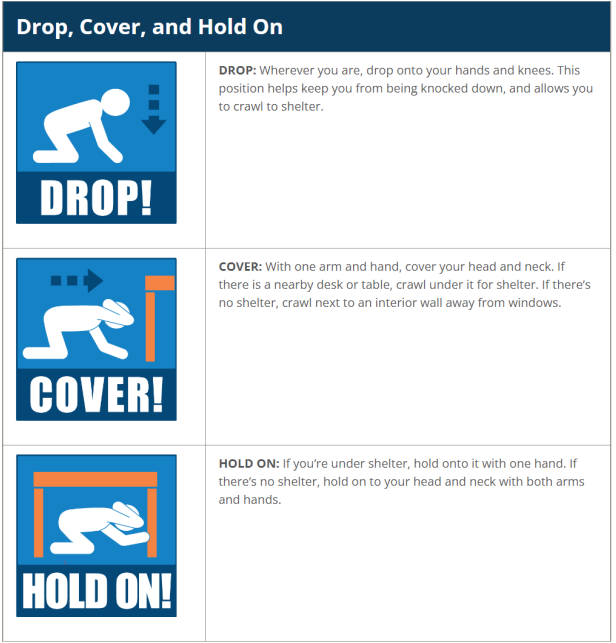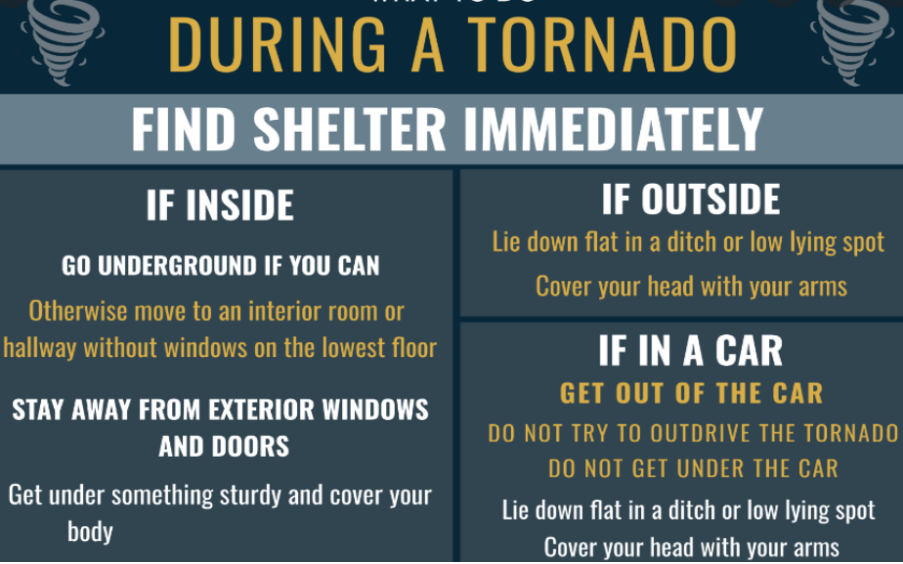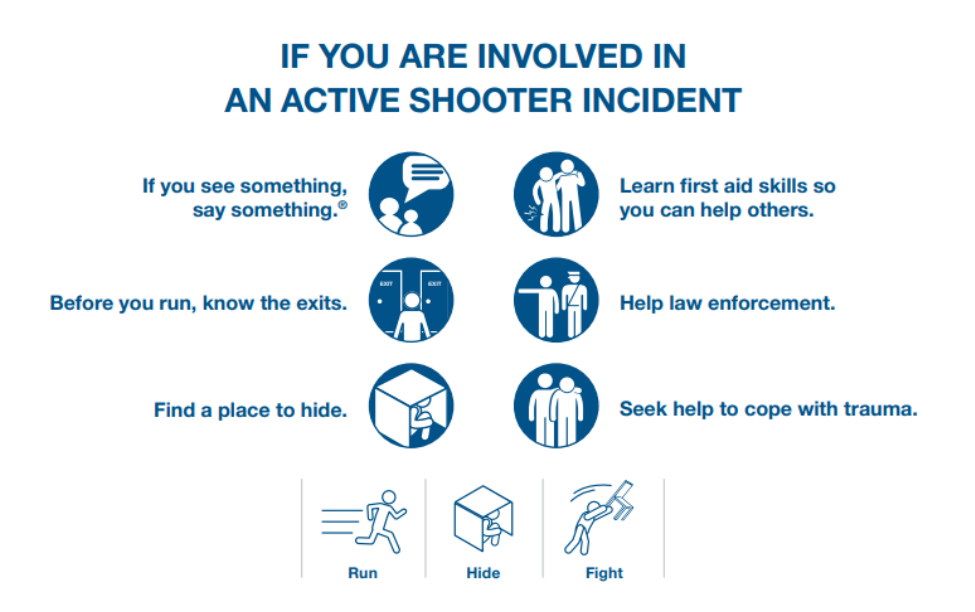PURPOSE
This plan is for the safety and well being of the workers for Northwest Tank Lines Inc.
It identifies necessary management and worker actions during fires and other emergencies. Education and training are provided so that all employees know and understand the Emergency Response Plan. The Emergency Preparedness and Response Plan shall comply with the Workers Compensation Act and OHS
Regulations.
RESPONSIBILITIES
● Ensure that all employees are trained in the Emergency Response Plan for responding to an emergency that may require rescue or evacuation.
● Director of HSE or designate will address with all workers the procedures for responding to an emergency that may require rescue or evacuation.
● Northwest will consult with employees in establishing and maintaining the emergency response plan.
The emergency response plan will be kept current and updated, reflecting current circumstances at the work site.
● Conduct a debrief after drills and actual incidents.
EVACUATION ROUTES
Office:
A diagram of the specific worksite evacuation routes for this emergency response plan are on a separate document.
Evacuation Procedure for all Emergency Situations and Drills
Muster Station (Calgary): NORTHWEST TANK LINES SIGN IN FRONT OF BUILDING
Employees must leave the building as soon as they hear an alarm. Everyone is responsible to “sweep” the building as they leave, checking for people inside offices, kitchens, other rooms, and closing doors as they pass them on the way out.
An employee from the South side of the building will take the guest register out with them. The front of the binder contains a list of employees that work in the Calgary office and emergency contact numbers.
After exiting the building, all employees are to assemble at the designated Muster Station in front of the building.
It is imperative employees stay off their phones and assemble quietly to await further instructions, to complete roll call, to attend to anyone who may need first aid, and to designate a person to call 911 if not already done.
To ensure everyone is accounted for in an emergency, supervisors must be aware of who is working in the office for their departments each day and employees will let their supervisor, or colleagues within their department, know if they are leaving for a short time or for the day.
The following persons are responsible for ensuring that employees comply with this requirement:
● Andrew Lewry, HSE Manager (Calgary), Kyle Porter, President (Calgary), Kevin Wilchynski, Director of Fleet Maintenance (Calgary), Aylin Bilgin, Director of HR
Office staff that have valid first aid training will administer first aid at the muster point until emergency services arrive and take control of the scene.
CRITICAL OPERATIONS
To minimize damage from the emergency, the following personnel are Incident Leads and are responsible for advising Clearbridge of the emergency for IT, and creating an initial phone report and email incident@nwtl.ca to advise other relevant parties.
● Andrew Lewry, HSE Manager
● Tim Johnson, HSE Director
The ECDL on the resource guide should be followed as applicable.
FIRST AID
The following personnel are certified and trained in both CPR and general first aid. These persons are to be contacted:
● Kelly Neufeld
● Aylin Bilgin
● Sarah Pohl
● Shawna Fedkiw
● Lisa Reyes
TRAINING
Northwest will ensure that all workers are trained in:
● Emergency response and all work related training
● Each worker will maintain their training as required by the certification
● Contact information and procedures for their use
● Reporting procedures to federal, provincial and local authorities
● Location of muster station(s)
EQUIPMENT
Fire extinguishers: 8
Fire alarms: 4 – front door and back door, two in the warehouse
Main floor:
● Front door
● Back door
● Server room
● North Kitchen
● Electrical room
● Warehouse Entrance
● Two in the warehouse
First Aid Supplies
Games Room – on the wall
Automated External Defibrillators (AED)
All Northwest office staff will be given training and the location of the AED in the workplace.
Games Room – on the bar
CONTACT INFORMATION
- For emergencies – DIAL 911
- Workers Compensation Board – Alberta – 403-517-6000
- Occupational Health and Safety – Alberta – 866-415-8690
EMERGENCY SERVICES
Fire
Temple Fire Station No 22
7199 Temple Drive NE, Calgary AB
Dial 311 for non emergency, 911 for Emergency
RCMP
Calgary Police Service, Westwinds Campus
5111 47 St NE, Calgary, AB
(403) 266-1234
Ambulance/EMS/ Hospital
Peter Lougheed Center of The Calgary General Hospital
3500 26 Avenue NE, Calgary, AB
T1Y 6J4
403-943-4555
ALARM SYSTEMS AND NOTIFICATION OF EMERGENCIES
In the event of a workplace or facility emergency, employees will be notified as follows:
● Telephone
● Fire Alarm
● Front Panel Alarm System
● Verbally – Shouting an alarm
DRILLS
Northwest will conduct annual drills and exercises that are intended to test proficiency and will ensure effective implementation.
POTENTIAL EMERGENCIES
Emergencies at the worksite could involve earthquakes, flood, fire, spills/ leaks, natural disasters, loss of utilities, motor vehicle accidents, violent intruder(s) Procedures for emergencies are on the following pages, click on the title to go directly to the page:
Fire 6
Spills/ Leaks/ Release of Hazardous Substance 7
Natural Disasters 8
Loss of Utilities 11
Motor Vehicle Incidents 12
Violent Intruders 13
Fire
In the event of a fire occurring within or affecting the worksite, the incident commander makes the following decisions and ensures the appropriate key steps are taken:
● Advise all personnel
● Call or designate a person to call 911
● Evacuate all persons to the muster station
● Headcount of all persons working or visiting the worksite
● Communicate with Emergency Services personnel once they are on scene
Fire-Extinguishers
Having to use a fire-extinguisher is simple; however, the situation that requires its use can make a simple thing difficult.
It is imperative that all staff remember that their first directive is to get away from any harm quickly and safely.
There is no immediate need to fight a fire, using any means, including fire extinguishers, if you are not trained or comfortable to do so.
When it comes to using a fire-extinguisher just remember the acronym P.A.S.S. to help make sure you use it properly.
PULL pull the pin that prevents the handle from being squeezed.
AIM aim the nozzle at the base of the fire.
SQUEEZE squeeze the handle to spray the contents. Remember a standard Fire extinguisher has less than 30 seconds of spray time.
SWEEP sweep back and forth as you spray the base of the fire.
A fire-extinguisher is only to be used for small fires. As a rule, call 911 or have someone call before you attempt to put out a fire. Even if you manage to put out a small fire yourself, call the fire department to have them come check it out. A small fire can be quickly brought under control, because Northwest staff have the information that is needed, such as:
1. The location of the fire extinguishers
2. How to operate the fire extinguisher
3. Location of nearest fire exit
4. Know the meeting area for your department in a fire emergency
5. Know the evacuation procedure for your area
6. Know who will contact 911 and report the fire if it becomes out of control
Spills/ Leaks/ Release of Hazardous Substance
Employees are required to report any spill of dangerous goods, in any amount, to HSE.
HSE will report the spill to the Regulatory Body as required, and will complete any follow up reports. A full investigation into the cause of the spill will be conducted outlining any recommendations or disciplinary action.
Environmental spills are reported to federal and provincial environmental authorities. Reporting procedures will be based on type and quantity of materials spilled, when required. Chemical substances will be stored in proper containers to minimize the potential for a spill. Whenever possible, chemicals should be kept in closed containers and stored so they are not exposed to stormwater.
In the event of a chemical spill:
● Approach with care and do not touch any substances
● Contact and notify emergency services and follow emergency procedures
● Notify your supervisor
● Assist the responding emergency service in identifying the chemical involved
Natural Disasters
Earthquakes
In the event of an earthquake:
● Remain in the building during the event, away from windows and doors
● Get underneath a desk or strong table.
● Cover your head and neck with one arm and with the other, hold onto a table leg
● After the earthquake, relocate all persons to Muster area if safe
● Perform headcount
● Contact and notify emergency services and follow emergency procedures

Tornado
● Take shelter in an inner hallway or room, away from windows, outside walls and doors
● Protect yourself by taking shelter under a heavy table or desk
● Perform headcount
● Contact and notify emergency services if required and follow emergency procedures.

Extreme Weather
If the weather or road conditions are poor in your area, notify management. If you have not already left your home for work, stay home! Do not drive to work in unsafe driving conditions.
If you are already driving:
● Slow Down. No matter how much experience you have, the way your vehicle will move on snow or ice is unpredictable.
● Increase the distance between cars, corners, junctions and any other hazard.
● Best practice is to keep engine revs low in order to maximize your grip in winter conditions.
● Keep a constant gentle throttle for best results.
● Avoid erratic driving behavior (such as steering, braking, acceleration or gear changes). Driving smoothly will conserve grip, and make you a safer driver.
Take extreme caution while driving. If you experience extreme driving conditions, try to find a safe spot
to wait it out. Do not stop under overpasses.
Loss of Utilities
Electrical/ Light Failure:
● Provide assistance to others who may be unfamiliar with the space.
● Back-up generators will provide emergency lighting in most areas.
● Do not use candles or other types of open flame for lighting.
● If safety is a concern, evacuate the building and go to the muster station.
● Remain calm and provide assistance to others if necessary.
● Do not leave work unless told to do so by an authorized person.
● Proceed cautiously outdoors or to an area that has emergency lighting.
● In most cases, power will be restored shortly or you may be relocated to another area with power.
Water Leak/Flooding:
● Do not walk through flood water
● If you can do so safely, turn the local water source off.
● If you can do so safely, cover or move objects that could be damaged by water.
● Evacuate the area.
● If higher ground is needed, roof access is through the warehouse
Motor Vehicle Incidents
● Stop, do not leave the scene unless you are in danger. Put your hazard lights on
● Report the accident to local authorities if warranted and if there are injuries
● Remain with the vehicle, if able to do so safely
● Do not admit any wrongdoing or liability for the incident to anyone at the scene.
● Obtain third party insurance and contact information. Take pictures of insurance and driver’s license. Share your information with the third party as well
● If accident scene is attended by police, obtain their card and file number
● If there are witnesses, obtain their contact information if they are willing to share it
● If safe to do so, act to reduce the risks associated with the accident, put cones around the scene if the vehicles cannot be moved out of the way of traffic
● Take pictures of the scene
● Report the incident to your supervisor
● Remove any company equipment/valuables from the vehicle before leaving it/having it towed
Violent Intruders
Run to Safety
● Getting away from the attacker is the top priority. Know the exits of the building
● Leave your belongings behind and get away.
● Call 9-1-1 when you are safe and describe the attacker, location and weapons.
● Keep others from entering the building if possible
Cover and Hide
● Cover and hide if you can’t evacuate. Find a place to hide out of view of the attacker and put a solid barrier between yourself and the threat if possible.
● Rooms with doors that lock in the Calgary building and have no windows: bathrooms, the south printer room and the swag room
● Lock and block doors, close blinds and turn off lights.
● Keep silent.
Defend, Disrupt, Fight
● Fight only as a last resort. When you can’t run or cover, attempt to disrupt the attack or disable the attacker.
● Be aggressive and commit to your actions.
● Recruit others to ambush the attacker with makeshift weapons such as chairs, fire extinguishers, scissors, books, etc.
● Be prepared to cause severe or lethal injury to the attacker.
Help the Wounded/Stay Safe after the Event
● First responders are there to stop the attacker. Stay out of the way, keep your hands empty and visible. They will not attend to wounded or assist with escape until the attacker is disabled
● Follow law enforcements’ and EMS’ instructions once they arrive.
● Take care of yourself first and then, if you are able, help the wounded get to safety and provide immediate care

